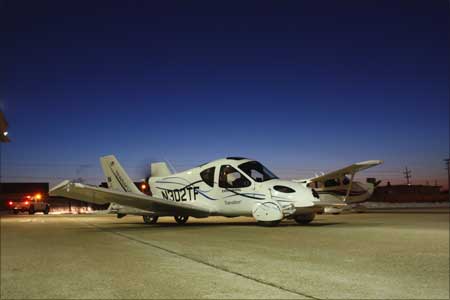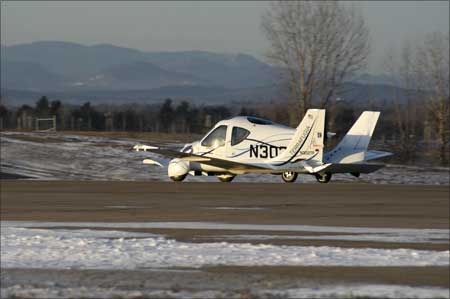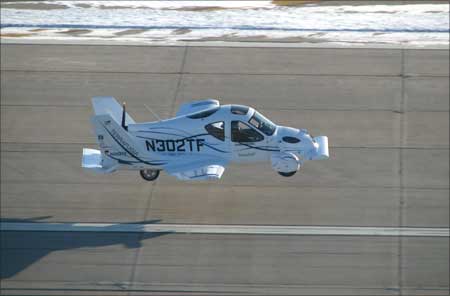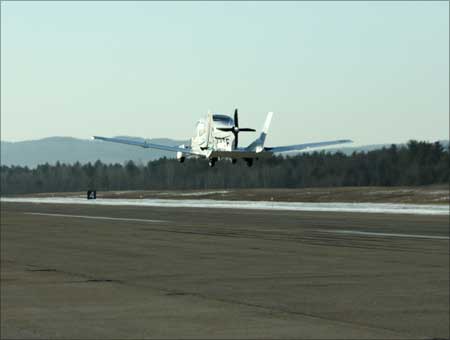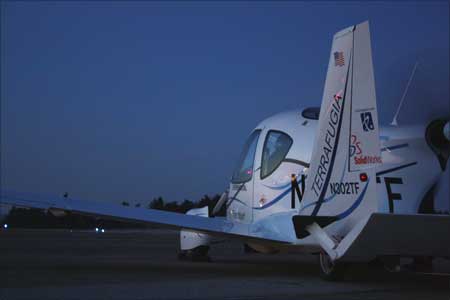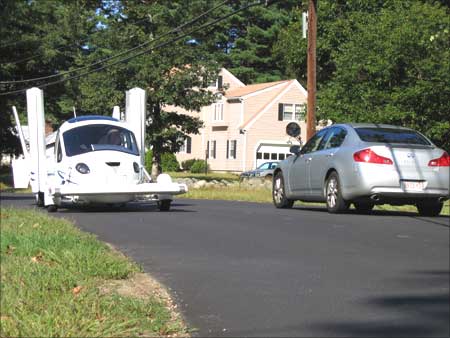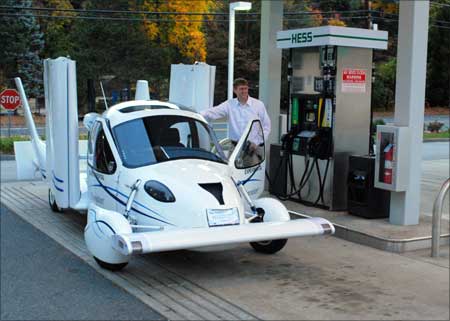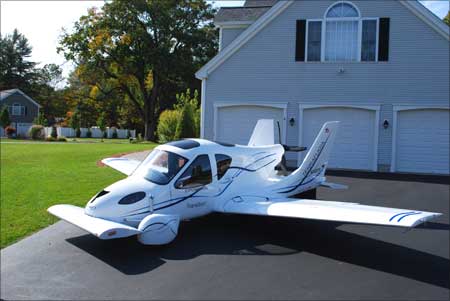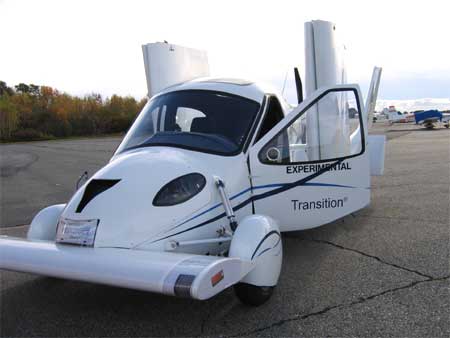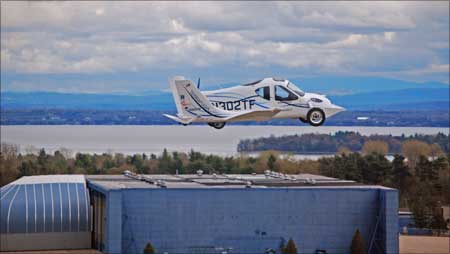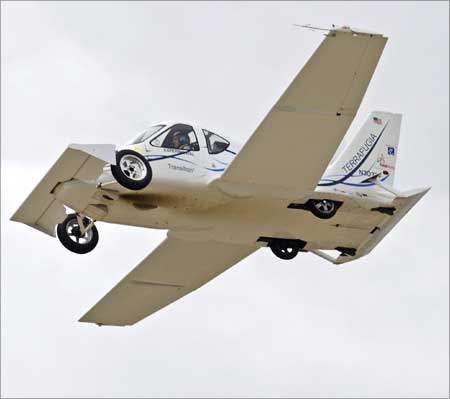 | « Back to article | Print this article |
Flying car? Here's what it is like!
Founded in 2006 by award-winning Massachusetts Institute of Technology-trained aeronautical engineers and management whizkids, Terrafugia is a company with a mission: to provide innovative solutions to the challenges facing personal aviation.
The result: the Transition Roadable Aircraft.
Flying car? Here's what it is like!
Its unique design allows the Transition to fold its wings and drive on any surface road with a modern personal airplane platform.
Once at the airport, the wings extend and the aircraft is ready.
Flying car? Here's what it is like!
Powered testing of the Proof of Concept has been ongoing since the second half of 2008.
Construction, testing and certification of the Production Prototype will follow completion of the Proof of Concept's testing program.
Flying car? Here's what it is like!
First customer delivery of a Transition Roadable Aircraft is expected to occur in 2011.
To date, Terrafugia remains privately funded by a group of accredited individual investors.
The company is based just outside Boston in Woburn, Massachusetts, USA.
Flying car? Here's what it is like!
Performance
- Cruise: 100 kts (115 mph)
- Rotate: 70 kts (80 mph)
- Fuel burn: 5 gph (gallons per hour)
- Fuel tank: 20 gallons
- Useful load: 430 lbs
- On road: 30 miles per gallon, highway speeds
- Light Sport Aircraft (LSA)
1 US gallon = 3.78 litres
Flying car? Here's what it is like!
Convenience
- Front wheel drive on the ground
- Automotive-style entry and exit
- Automated electromechanical folding wing
- No trailer or hangar needed
- Cargo area holds skis, fishing poles or golf clubs
Flying car? Here's what it is like!
Safety
- Drive in case of inclement weather
- Proven 100 hp Rotax 912S engine
- Full vehicle parachute available
- Modern glass avionics
- Automotive crash safety features
Flying car? Here's what it is like!
Dimensions
Folded:
- 6 feet 9 inches tall
- 6 feet 8 inches wide
- 18 feet 9 inches long
Airplane:
- 6 feet 3 inches tall
- 19 feet 2 inches long
Wingspan:
- 27 fee 6 inches
Cockpit:
- 51 inches at the shoulder
Flying car? Here's what it is like!
The Transition can take off or land at any public use general aviation airport with at least 2,500 feet of runway.
On the ground, the Transition can be driven on any road and parked in a standard parking space or household garage.
Flying car? Here's what it is like!
Once on the ground, with the wings folded, the vehicle can be driven on any road.
The Transition is powered by a certified aircraft engine that runs on unleaded automotive gasoline.
Perfect for trips between 100 and 500 miles, the Transition is not designed to replace anyone's automobile.
Flying car? Here's what it is like!
After landing, the pilot activates the electro-mechanical wing folding mechanism from inside the cockpit.
The wings fold, once at the root and once at the mid-span, and are stowed vertically on the sides of the vehicle in less than 30 seconds.
Simultaneously, the engine power is directed to the front wheels with a continuously variable transmission.
Flying car? Here's what it is like!
Before flying, the pilot extends the wings and performs a standard preflight. The engine power is directed to the propeller for flight through a carbon fibre drive shaft.
If bad weather is encountered en route, the pilot can land and drive without worrying about ground transportation.
At the destination airport the pilot can fold the wings and drive off the airfield without having to move bags or arrange for additional transportation.
Driving and flying can be combined between multiple airports as it is not necessary to take off and land at the same field.
